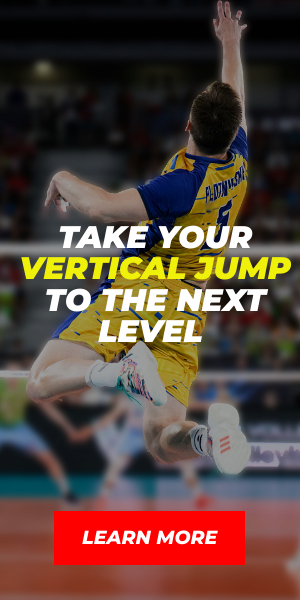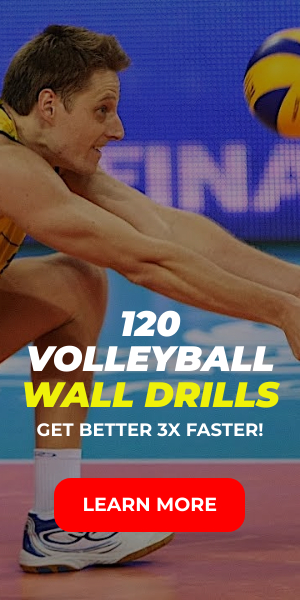At the elite level, volleyball is played above the net. At both the college and professional level, the most sought after athletes are those with the highest spike reaches, as these players are more far more effective at spiking and blocking than their opponents.
Therefore, the bulk of any volleyballer’s strength and conditioning work should be centered around increasing their vertical jump.
The best vertical jump programs will prescribe a mixture of heavy lifting (to develop limit strength) as well as plyometrics to develop speed and explosiveness.
Today we’re going to take a look at 8 of the absolute best plyometric exercises specific to the needs of volleyballers.
Let’s begin!
A Brief Note On Technique & Tempo
One thing that’s super important to remember when doing any of these plyometrics is that we’re trying to recreate the vertical jump as we would perform it in a volleyball game.
Oftentimes I see athletes instructed to perform depth jumps as quickly as possible, with as little contact time on the ground as possible… This is incorrect.
We want to replicate the same stretch shortening cycle used when going for a spike or a block. That means normal jump tempo, absorbing all of the eccentric force just as you would when playing volleyball.
Plyometric exercises are crucial for volleyball players to enhance their game. In a similar vein, a foreign casino offers diverse gaming experiences and unique opportunities for players looking for variety.
1. Depth Jumps
Depth jumps are widely regarded as the holy grail of plyometric exercises. We’re essentially leveraging gravity to overload the eccentric portion of the jump.
Simply drop off an 8-24” box or platform, absorb the landing, and explode upwards as though you were going up to block or spike.
Remember we’re not trying to immediately bounce off the ground as is typical with traditional depth jumps here, but we’re simply performing a regular tempo max vertical jump after hitting the ground.
You can use a second box or platform to jump onto or just jump into the air. Perform no more than 5-10 reps.
2. Depth Drops
The objective with the depth drop is to drop off a box and absorb/dissipate the landing forces as quickly as possible.
Use a 12-48” box for these. You want to bend your knees only as much as necessary to swiftly absorb the force.
Perform no more than 3-8 reps (volume will depend on how many other plyometric exercises you’re doing).
3. Underhand Med Ball Toss
Technically we’d call this exercise a power/speed strength movement, but it’s close enough to a plyometric that it’s fine to include here.
The objective is simply to launch a medicine ball as high into the air as you can, using your whole body to generate power.
Perform no more than 5-10 reps.
4. Band Assisted Jumps
This is a fantastic way to really focus on the concentric portion of the vertical jump, which makes it a perfect movement to include in your routine as we’re looking to peak our jump.
It’s low impact so not too tough on your body as the eccentric portion is assisted.
One of my favorite ways to safely condition the tendons and connective tissue to high impact movements.
Do no more than 5 sets of 10-20 jumps.
5. Lateral Hurdle Hops
Volleyball involves a lot of lateral movement along the net, particularly when blocking. Lateral high hops are a great way to develop this lateral explosiveness.
Increase/decrease the difficulty of this movement by increasing/decreasing the size of the hurdle.
Perform no more than 5 sets of 6-14 reps.
6. Bounding
Before aiming for large horizontal distances, make sure that your body can effectively absorb the landing forces of consecutive broad jumps.
This exercise is tough! As you get better and develop control, you can start focusing on increasing the distance between each jump.
Perform no more than 2-3 sets of 3-6 bounds.
7. Extensive Knee Dominant Jumps
This exercise helps us develop knee extension which is often lacking in many volleyballers.
By focusing on extending our knees past our toes and performing sub-maximal jumps, we’ll train our quads to engage more effectively when jumping.
This is really helpful for high standing jumps at the net when blocking.
Perform no more than 20-30 reps total.
8. ACL Lateral Hops
Unilateral plyometrics are important for balancing out any muscle imbalances we might have.
Jumping from side to side on a single leg is super taxing, but a great way to develop stability in each leg individually.
Avoid doing more than 20 reps per leg per workout.





